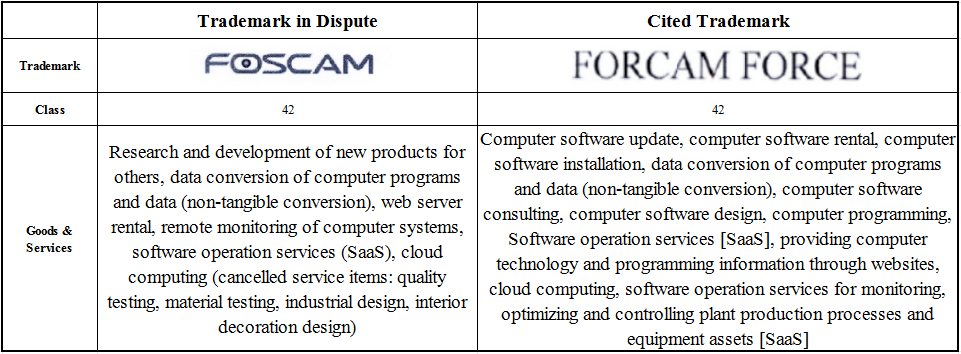No squatting or hoarding! CENFO's trademark invalidation defense was successful!
2023-04-28
Case details
1. CENFO’s Client: a intelligent technology company in Shenzhen A
2. Case type: Invalidity defense
3. Judicial authority: Trademark Office of the CNIPA
TRIAL RESULT
The Trademark Office of the CNIPA believes that: 1. The evidence submitted by the applicant cannot prove that the cited trademark was used before the application date of the disputed trademark, and cannot prove the existence of the relationship between the applicant and the respondent; 2. The applicant cited Paragraph 1 of Article 44 of the Trademark Law lacks factual basis and cannot prove that the disputed trademark was “registered by deception or other unfair means.” Therefore, the disputed trademark shall be maintained and our defense of invalidity declaration was successful.
CASE DETAILS
On October 22, 2021, Company B (hereinafter referred to as the "Applicant") filed a lawsuit against Company A (hereinafter referred to as the "Respondent") for the Class 42 registered trademark No. 184586** (referred to as the "disputed trademark") filed an application for invalidation.
Comparison between the disputed trademark and the cited trademark:

Our attorney analyzed the case based on the factual grounds presented by the applicant. A targeted and forceful rebuttal was made to the factual grounds raised by the applicant.
The disputed trademark was originally created by the respondent, and the trademarks under the respondent's name were all centered on the main products. There was no intention to register or hoard the trademark. Moreover, the respondent's registered trademark was motivated by business needs and was in good faith.
In the end, the examiner recognized our defense and believed that the applicant’s grounds for invalidation were untenable. CENFO represented our client and won the defense case for invalidation of this trademark.
Typical meaning
Focus one:
Whether there is "other relationship" between the respondent and the applicant
"Other relationships" in the "Trademark Examination and Trial Guidelines" refer to other relationships other than the business dealings between the two parties. Common contracts and business relationships include: buying and selling relationships; entrusted processing relationships; franchise relationships (trademark use licenses); investment relationships; sponsorship and joint activities; business inspection and consultation relationships; advertising agency relationships; and other business relationships. Common other relationships include: kinship relationships; affiliation relationships (such as ordinary employees other than agents specified in Article 15, Paragraph 1);
In this case, the applicant [Company B] is a foreign enterprise whose main business is to provide various Internet solutions. The respondent [Company A] is a Chinese enterprise whose main products are the sales of cameras, including network cameras, wireless network cameras, network digital hard disk recorders, baby monitors, network video servers, etc.
The main businesses of the two are different, the core goods/services are not related in any way, and the consumer groups they target are very different; and they are located in very different regions, and the respondent fundamentally has no possibility of contacting the applicant and its brand products.
Focus two:
Regarding whether the disputed trademark was registered "by other improper means" and whether the respondent had malicious preemptive registration and subjective intention to hoard the trademark
The act of applying for trademark registration "not for the purpose of use" means that when applying for registration of a trademark, the applicant has neither the purpose of actually using the trademark nor the intention to use the trademark, or based on reasonable inference, there is no possibility of actual use of the trademark. .
After careful study by our attorney and understanding of the relevant situation, the evidence materials provided by the applicant are mostly online evidence, and cannot prove that the cited trademark has been used with a high reputation in China before the disputed trademark application date, let alone enumerating the connections between the applicant and the respondent cannot prove the respondent's malicious preemptive behavior. The trademarks held by the respondent are all closely related to its main business. There is no hoarding of trademarks and no violation of Article 4 of the Trademark Law.
At present, our country is vigorously investigating and cracking down on trademark hoarding. Therefore, whether an individual or a business applies for a trademark, it must be done with good intentions. If a trademark owner encounters a trademark invalidation declaration by others, he must actively defend his trademark. Although failure to defend does not necessarily invalidate the trademark, the examiner will make a ruling based only on the evidence provided by the applicant, and the result will be more biased on the applicant's side.
In addition, if the success rate of invalidation defense is low, but you still want to continue to use the applied trademark, it is recommended to contact a professional agency to evaluate the risk of infringement of the trademark in subsequent actual use to avoid being saddled with "sky-high compensation" due to infringement.